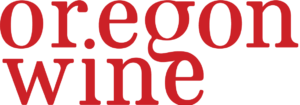Below is a summary of the draft budget to be reviewed by the Oregon Wine Board of Directors at their public meeting on March 3, 2022. An additional meeting is scheduled on February 8 with regional winery associations to review draft budget details and gather additional industry feedback. If you would like to provide comments on this draft budget directly for consideration please email them to [email protected] by February 18, 2022.
Click here to view the 2022-23 Draft Budget Proposal Document Posted on February 1, 2022
SUMMARY
The Oregon Wine Board adopts a budget each year in March to allocate funding for programs and general and administrative expenses for the next fiscal year. The Oregon Wine Board reviews the proposal in an open, public meeting and, with their endorsement, it is also sent for approval by the Director of the Business Oregon Commission.
This 2022-23 draft budget summary includes an 11% revenue reduction and a 10% expense reduction from the prior year’s approved budget.
Click here to view the 2022-23 Draft Budget Narrative
REVENUE ASSUMPTIONS
Grape Assessment and Wine Tax
Since it is difficult to predict the results of the grape harvest for all regions of the state a year in advance, the OWB relies on the past 3-year average assessment as a preliminary revenue number. As it is needed to reflect more accurate harvest figures, the OWB occasionally develops an adjusted revenue and expense forecast in the fall or winter, for the remainder of the year. When submitted by the Finance Committee, budget adjustments are approved by the Board of Directors in regular, public meetings. The wine tax is also projected at a 3-year average. For the 2022-23 annum, the tax rates are as follows and paid directly to the OLCC:
- Grape Assessment:
- $25/ton tax on grapes harvested in Oregon and used to produce wine
- $25/ton tax on grapes imported into the state and used to produce wine
- $25/ton tax on wine produced from juice or concentrate
- $12.50/ton tax on wine grapes sold to businesses outside of the state
- $0.021/gallon tax on wine made from all other agricultural products (i.e. cider)
- Wine Tax:
- $0.02/gallon tax on wine sold within the state of Oregon (the first 40,000 gallons sold annually in Oregon are exempt for wineries producing less than 100,000 gallons annually in-state). The $0.02/gallon transferred to the OR Wine Board is a portion of the $0.67 per gallon in total tax paid by wineries on which the tax is levied
BUDGET DEVELOPMENT
This budget was developed over the following timeline and with monthly opportunities for seeking and gathering feedback from industry and board members on budget priorities and programs.
| October |
|
| November |
|
| December |
|
| January |
|
| February |
|
| March |
|
BUDGET PRIORITIES
- Oregon Wine Symposium reflected as break-even on direct event costs
- The budget reflects strategic investments in:
- Viticulture and Enology Research
- Community Benchmark/WISE Academy (offset by grant funds)
- Industry Education/Oregon Wine Symposium (offset by ticket sales and sponsorship)
- Oregon Wine Month (including new merchandising support effort)
- Tourism promotion through an Oregon Wine Touring publication
- Communications programming to drive more PR
- Launching a redesigned consumer website to support wine tourism (partially offset by grant funds)
- Overall compensation (including benefits) budget increase of 5%
- The current inflation rate shows at 7%
- Overall budget level consistent with last year’s budget
2022-23 YEAR-END RESERVES
It is the policy of the Oregon Wine Board, as adopted by its directors, to reserve an amount equal to 30% of the prior three-year average grape assessment income for the purpose of covering expense commitments should the annual harvest be limited. The OWB also maintains access to a line of credit in the amount of $100,000 for the same purpose. The effect of the 2020 harvest continues to impact the OWB’s tax income level, requiring access to the reserve funds. The reserve goal for this budget is $496,838, which reflects an decrease of 12% from the prior year. This budget expects to utilize $306,731 of the reserve goal balance, leaving the total year end reserve and surplus is equal to $190,107. OWB predicts income levels will approach historic levels in the future allowing it to restore the reserve.
If you have any questions, comments, or desire more detail on this budget proposal, please email [email protected].

Leave a comment